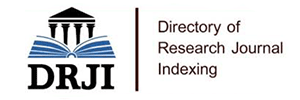
Journal Basic Info
**Impact Factor calculated based on Google Scholar Citations. Please contact us for any more details.Major Scope
- Hematology
- Neoadjuvant Therapy
- Adjuvant Therapy
- Radiation Oncology
- Palliative Care
- Blood Cancer
- Surgical Oncology
- Immunology
Abstract
Citation: Clin Oncol. 2021;6(1):1772.DOI: 10.25107/2474-1663.1772
Clinical and Morphological Heterogeneity of the Xp11.2 Translocation Renal Cell Carcinoma
Amelia Nicoleta Petrescu, Oana Neagu, Gabriela Mihaela Berdan, Alin Horaţiu Mureșan, Silviu Andrei, Daniel Damian, Bogdan Braticevici, Diana Alexandra Costache and Viorel Jinga
Department of Pathology, “Prof. Dr. Th. Burghele” Clinical Hospital, Romania
Department of Pathology, Emergency University Hospital Bucharest, Romania
OncoTeam Diagnostic, Romania
Department of Urology, “Prof. Dr. Th. Burghele” Clinical Hospital, Romania
“Carol Davila” University of Medicine and Pharmacy, Romania
Department of Pathology, Colentina University Hospital, Romania
*Correspondance to: Amelia Nicoleta Petrescu
PDF Full Text Case Series | Open Access
Abstract:
Xp11.2 translocation cell carcinoma represents a particular neoplasia with advanced stage at diagnosis, complex morphology and unpredictable progression. We describe five different scenarios involving patients with ages ranging from 7 to 79 years old, different tumor morphology and therapy management, focusing on prevalent features of this cancer. Diagnosis was assessed using the validated methods: Immunohistochemistry for TFE3 and break-apart FISH assay. Four out of five cases were T3 stage at presentation, with high grade nuclei on microscopy. All tumors displayed a papillary, nested and solid mixed architecture, while 3/5 associated psammoma bodies and hyaline nodules. One case showed rhabdoid differentiation. Prognosis was independent of tumor size or nuclear grade. Three patients are currently free of disease from their last periodical examination. The younger patient had an adrenal recurrence two years following the diagnosis. Unfortunately, one patient succumbed to cancer within 14 months. Adjuvant treatment didn’t prove significant efficacy.
Keywords:
Kidney; Xp11.2 translocation carcinoma; FISH assay; TFE3 marker
Cite the Article:
Petrescu AN, Neagu O, Berdan GM, Mureșan AH, Andrei S, Damian D, et al. Clinical and Morphological Heterogeneity of the Xp11.2 Translocation Renal Cell Carcinoma. Clin Oncol. 2021;6:1772..













